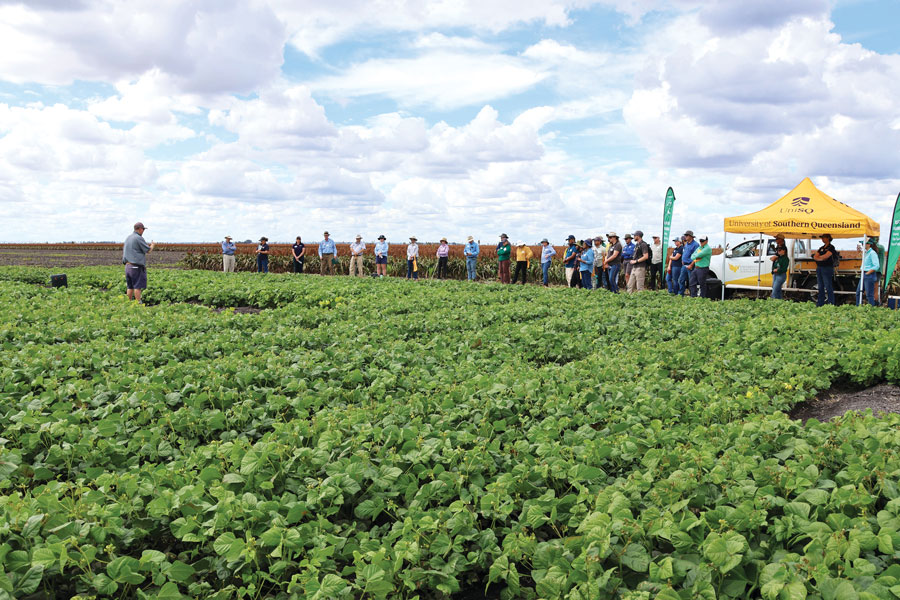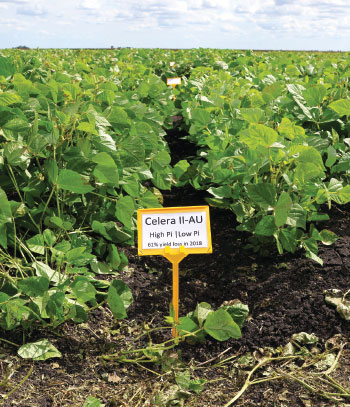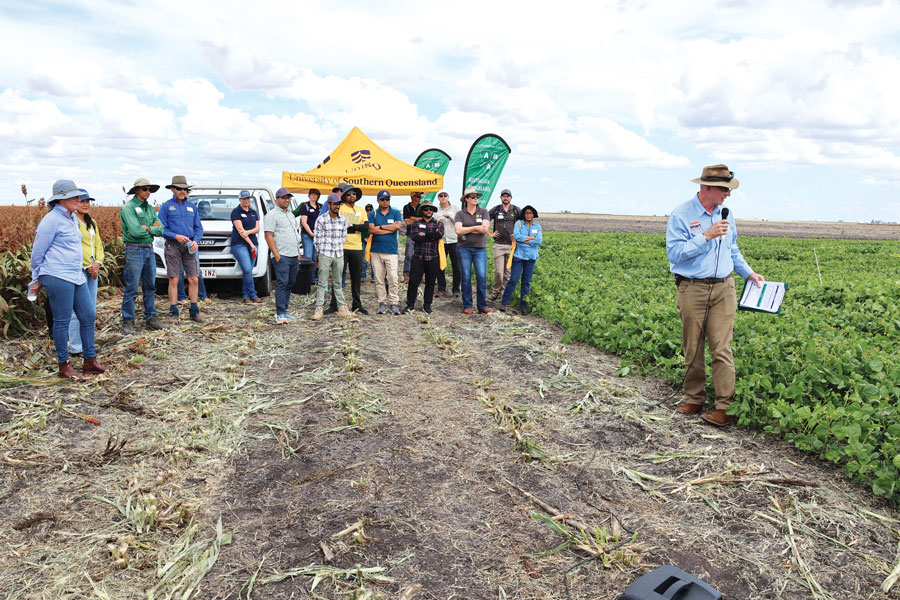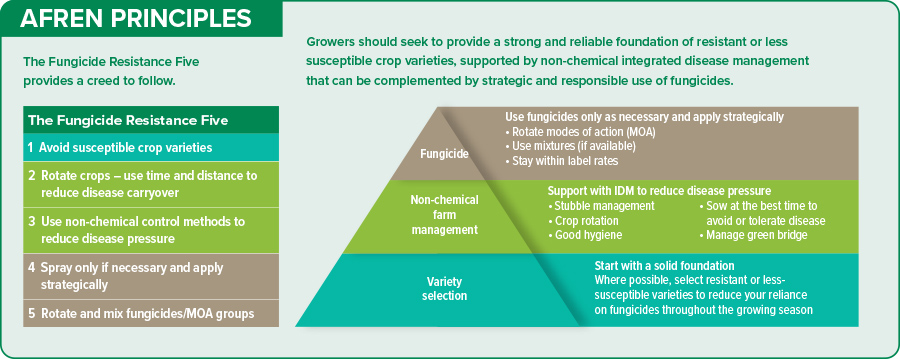Key points
- Complacency about nematodes and pathogens is a threat to crop productivity
- A field day on managing root lesion nematode in mungbeans, and fungicide resistance in grain crops, was recently held at West Prairie, on Queensland’s Darling Downs
- The aim was to refocus and re-educate growers and agronomists on potential nematode issues
- An estimated 80 per cent of paddocks in the northern region are infested with one or both of the two main species of root lesion nematode – Pratylenchus thornei and Pratylenchus neglectus
While many growers diligently carry out soil tests to measure nutrient levels, the opportunity to test for nematodes and other pathogens, such as crown rot, is often overlooked.
This complacency poses a major threat to crop productivity, according to Paul McIntosh, Pulse Australia and WeedSmart extension agronomist.
Paul was recently involved in a field day on managing root lesion nematode in mungbeans and fungicide resistance in grain crops at West Prairie, on Queensland’s Darling Downs.
Held at the Gwynne family farm, Tangalooma, it attracted about 60 researchers, growers and agronomists. Paul is hopeful the messages – which have remained consistent over many years – will spread further afield to more growers.
“It was nice to have some farmers there to reinforce the issue,” he says. “It recognises the fact that we all have forgotten a bit about nematodes in this part of the world, and we need to refocus and re-educate ourselves on addressing potential nematode issues in the soils of the farms we consult on.”
Paul says many growers diligently carry out soil tests to measure nutrient levels, but overlook the opportunity to test for nematodes and other pathogens, such as crown rot, which can be identified with PREDICTA® B tests.
In many cases, Paul says growers who suspect the presence of nematodes will choose crops or varieties that are more tolerant, without confirming which nematode species is present.

University of Southern Queensland research fellow Dr Jason Sheedy speaks about the impact of root lesion nematode on mungbean yields. Photo: Jason Sheedy
Managing root lesion nematode in mungbeans
An estimated 80 per cent of paddocks in the northern region are infested with one or both of the two main species of RLN – Pratylenchus thornei and Pratylenchus neglectus.
At the field day, University of Southern Queensland research fellow Dr Jason Sheedy spoke about the impact of this on mungbean yields. Early infestations can start as hot spots but if left unchecked can enlarge and merge over time until they are relatively uniform across the paddock.
“That doesn’t necessarily mean you’ve got exactly the same number of nematodes in every different part of the paddock but once you get to that level, it probably doesn’t matter so much,” Dr Sheedy says.
Standard management practices for managing nematodes include soil sampling to identify species and monitor population size, and crop sequencing to minimise the number of host crops.
“If you have high populations, growing one resistant crop isn’t enough,” he says.
 Research found nematodes were responsible for yield losses of 61 per cent in Celera II-AUA mungbeans, despite little apparent damage to the growing crop. Photo: Jason Sheedy
Research found nematodes were responsible for yield losses of 61 per cent in Celera II-AUA mungbeans, despite little apparent damage to the growing crop. Photo: Jason Sheedy
“You might need to grow two or three consecutive resistant crops to get those populations down because they’re very persistent in the soil. Essentially, if you have them, they’re a permanent feature.”
Dr Sheedy says Pratylenchus thornei can be found at depths of 1.5 metres in the soil profile, making eradication impossible and presenting opportunities for reinfestation.
Unlike some diseases that affect only a few crops, nematodes have a wide host range. They favour wheat – easily stripping half the yield from intolerant varieties – and losses in mungbeans are not far behind, although in-crop damage is less obvious.
A pilot study found yield losses of 61 per cent in Celera II-AU, while the most popular variety, Jade-AU, lost about 39 per cent of its yield and another recently released variety, Opal-AU, lost 41 per cent.
Dr Sheedy says a two-year project underway at Formartin, west of Oakey, and Felton, southeast of Pittsworth, aims to gather more data about losses in mungbeans, an important pulse crop for northern growers.
Mungbeans are planted as an opportunity crop after early summer rain, or as a standalone crop when prices are high.

Pulse Australia industry development agronomist Paul McIntosh speaks about tackling fungicide resistance in mungbeans and barley. Photo: Jason Sheedy
Fungicide resistance in grain crops
Recent research has raised red flags for Queensland grain growers, says University of Southern Queensland Centre for Crop Health director Professor Levente Kiss, who spoke about fungicide resistance at a workshop during the field day.
Professor Kiss says resistance to Group 3 and 11 fungicides was documented in wheat powdery mildew samples from Queensland sent for testing at Curtin University’s Centre for Crop and Disease Management.
 University of Southern Queensland PhD student Ayesha Senanayake and Centre for Crop Health director Professor Levente Kiss collect mungbean powdery mildew samples for fungicide resistance tests. Photo: Dr Kirsty Owen, USQ
University of Southern Queensland PhD student Ayesha Senanayake and Centre for Crop Health director Professor Levente Kiss collect mungbean powdery mildew samples for fungicide resistance tests. Photo: Dr Kirsty Owen, USQ
A combination of laboratory testing and field observations has confirmed fungicide resistance in five diseases in the state’s grain crops: powdery mildew in wheat, mungbeans (Groups 3 and 11) and barley (Group 3), as well as net form of net blotch and spot form of net blotch in barley (Groups 3 and 7).
A member of the GRDC-supported Australian Fungicide Resistance Extension Network (AFREN), Professor Kiss says the message for Queensland growers is now the same as for growers in other states where resistance is becoming an issue. He urged everyone to be alert and follow AFREN’s five key actions (see box page on this page), or risk losing access to fungicides that are still effective.
Paul McIntosh, Pulse Australia and Weedsmart extension agronomist, says the potential for fungicide resistance “really scares me”.
In the past 30 years, he has watched herbicide resistance spread across the state. He has experience of Heliothis armigera resistance to synthetic pyrethroid and other pesticides in cotton and grain crops in the 1980s.
“Now we’ve got fungicide resistance staring us in the face,” he says.
“If we don’t do the right thing with the AFREN Fungicide Resistance Five, we’ll end up in heaps of trouble with fungicide resistance in cropping systems.
“I think we should reinvigorate and re-educate ourselves about nematodes and fungicide resistance. It’s going to be on top of us quicker than what we’d like to see.”

Source: AFREN
More information: Paul McIntosh, paul@pulseaus.com.au; Jason Sheedy, jason.sheedy@unisq.edu.au; Levente Kiss, levente.kiss@unisq.edu.au

























































